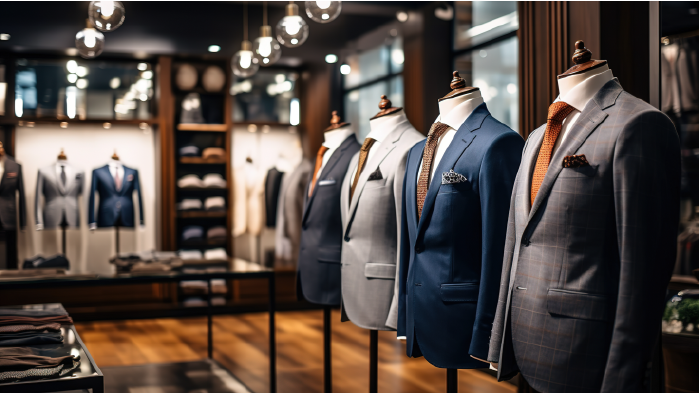Mastering Elegance: A Comprehensive Guide to Reviewing and Purchasing Men's Suits
The suit has long been a symbol of sophistication, professionalism, and timeless style. Whether for business, formal events, or everyday wear, a well-fitted suit can elevate a man’s appearance and confidence. However, navigating the world of men’s suits can be daunting, with myriad options in terms of styles, fabrics, fits, and brands.
In this guide, we’ll delve into the key factors to consider when reviewing and purchasing men’s suits, from understanding suit construction to choosing the right style, fit, and accessories, ensuring you make a sartorial statement that reflects your individuality and taste.

Understanding Suit Construction
Before diving into the buying process, it’s essential to understand the construction of a suit and its components:
-
Jacket: The jacket is the cornerstone of a suit, consisting of a chest piece, canvas, lapels, and lining. Look for a jacket with a structured chest piece and canvas construction for shape and durability.
-
Trousers: Suit trousers should feature a proper fit, comfortable waistband, and quality construction. Pay attention to details such as pocket styling, hemming, and fabric quality for a polished look.
-
Buttons and Stitching: Examine the buttons and stitching of a suit for quality and craftsmanship. Quality suits typically feature well-sewn buttons, reinforced seams, and precise stitching throughout.
Choosing the Right Style
Men’s suits come in various styles, each with its own unique characteristics and aesthetic appeal:
-
Single-Breasted vs. Double-Breasted: Single-breasted suits are versatile and classic, featuring a single row of buttons down the front. Double-breasted suits have overlapping front flaps and two parallel columns of buttons, offering a more formal and structured look.
-
Lapel Style: Lapels come in different styles, including notch lapels, peak lapels, and shawl lapels. Choose a lapel style that complements your body type and personal style preferences.
-
Suit Silhouette: The silhouette of a suit refers to its overall shape and fit. Common silhouettes include slim fit, tailored fit, and classic fit. Select a silhouette that accentuates your physique and provides a comfortable yet flattering fit.
Fabric and Material Selection
The fabric and material of a suit play a crucial role in its appearance, comfort, and durability:
-
Wool: Wool is the most common fabric used in suits due to its versatility, breathability, and durability. Look for high-quality wool fabrics like worsted wool or super wool for a luxurious feel and excellent drape.
-
Cotton: Cotton suits are lightweight and breathable, making them ideal for warmer climates or casual occasions. Choose cotton suits with a high thread count for durability and a smooth finish.
-
Linen: Linen suits are perfect for summer or tropical climates, thanks to their lightweight and moisture-wicking properties. Keep in mind that linen tends to wrinkle easily, adding a relaxed and casual charm to the overall look.
Ensuring the Right Fit
The fit of a suit is paramount to its overall appearance and comfort. Consider the following factors when assessing fit:
-
Jacket Fit: The jacket should fit snugly across the shoulders without pulling or wrinkling. Check the length of the sleeves, the collar, and the torso for proper proportions and comfort.
-
Trouser Fit: Trousers should sit comfortably at the waist without sagging or bunching. The hem should break slightly at the top of the shoe, creating a clean and polished appearance.
-
Tailoring: Investing in professional tailoring is essential for achieving the perfect fit. Tailors can make adjustments to the jacket sleeves, trouser waistband, and pant length to ensure a custom fit that flatters your body shape.
Accessories and Styling
Complete your suit ensemble with the right accessories and styling details:
-
Shirt and Tie: Choose a dress shirt that complements the color and pattern of your suit, opting for classic colors like white, light blue, or subtle patterns like stripes or checks. Pair your shirt with a coordinating tie for a polished finishing touch.
-
Footwear: Select dress shoes that complement the style and color of your suit. Classic options include Oxford shoes, Derby shoes, and loafers in black, brown, or burgundy leather.
-
Accessories: Enhance your suit with accessories like a leather belt, pocket square, cufflinks, and watch that add personality and sophistication to your look.
Top Suit Brands and Recommendations
Several suit brands are renowned for their craftsmanship, quality, and style:
-
Suitsupply: Suitsupply offers a wide range of high-quality suits in modern cuts and styles, with options for customization and personalization.
-
Brooks Brothers: Brooks Brothers is a heritage brand known for its classic American style and impeccable tailoring, offering a range of suits in traditional cuts and timeless designs.
-
Hugo Boss: Hugo Boss combines modern sophistication with European elegance, offering a diverse selection of suits in contemporary cuts and premium fabrics.